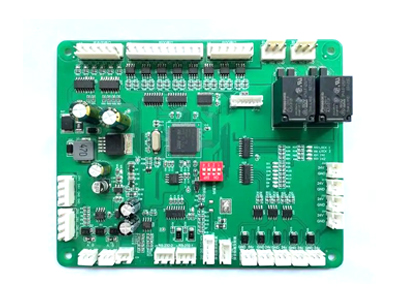Mastering multilayer PCB assembly and soldering techniques is crucial for ensuring reliable and high-quality connections between components and layers. Here are some key techniques to consider:

1.Proper Component Placement:
Accurate component placement is essential for successful multilayer PCB assembly.
Ensure components are aligned correctly with their corresponding footprints on the PCB.
Use precision pick-and-place machines or manual techniques with proper tools and alignment aids.
2.Solder Paste Application:
Apply solder paste to the PCB pads using stencil printing techniques.
Ensure precise alignment of the stencil to achieve accurate solder paste deposition.
Use appropriate solder paste for your specific PCB design and components.
3.Reflow Soldering:
Reflow soldering is the most common method for soldering components on multilayer PCBs.
Follow the manufacturer's guidelines for temperature profiles and reflow oven settings.
Ensure even heating and controlled cooling to prevent thermal stress and solder joint defects.
4.Thermal Considerations:
Multilayer PCBs may have thermal management challenges due to component density and layer stacking.
Use thermal vias to connect heat-generating components to internal copper planes for efficient heat dissipation.
Consider heat sinks, thermal pads, or other cooling techniques if necessary.
5.Soldering Techniques:
Use the appropriate soldering technique based on the components and board size.
For surface mount components, reflow soldering with a solder paste is typically used.
Through-hole components may require wave soldering or hand soldering techniques.
Ensure proper solder joint formation, avoiding issues like cold joints, solder bridges, or tombstoning.
6.Inspection and Quality Control:
Perform thorough visual inspections during and after the assembly process.
Use magnification tools to check for solder joint quality, component alignment, and potential defects.
Conduct electrical tests, such as continuity and functional testing, to ensure proper functionality.
7.Rework and Repair:
In case of defects or rework requirements, use appropriate techniques for component removal and replacement.
Follow industry standards and guidelines for rework procedures, such as desoldering tools and techniques.
Be mindful of the potential impact on adjacent layers and components during rework.
8.ESD Protection:
Protect components and the PCB from electrostatic discharge (ESD) during assembly and handling.
Use proper grounding techniques, antistatic workstations, and ESD-safe tools and equipment.
9.Documentation and Traceability:
Maintain detailed documentation of the assembly process, including component placements, soldering parameters, and inspection results.
Establish a traceability system to track components, materials, and processes for quality control and future reference.
10.Training and Experience:
Develop expertise through training programs, workshops, and hands-on experience.
Stay updated with the latest industry standards, techniques, and equipment advancements.
Remember, multilayer PCB assembly and soldering require precision, attention to detail, and adherence to industry best practices. Working with experienced PCB assemblers or contract manufacturers can provide valuable support and expertise to ensure successful assembly of your multilayer PCBs.
Get more knowledge about Multilayer PCB Assembly and Soldering Techniques please refer to Rigaopcb:https://www.rigaopcb.com/